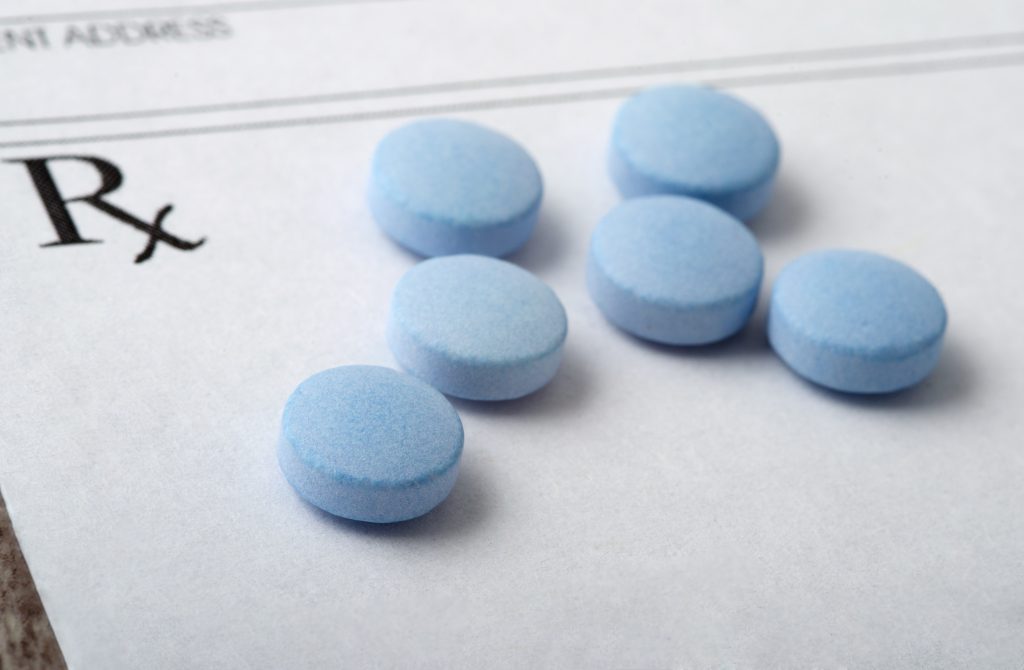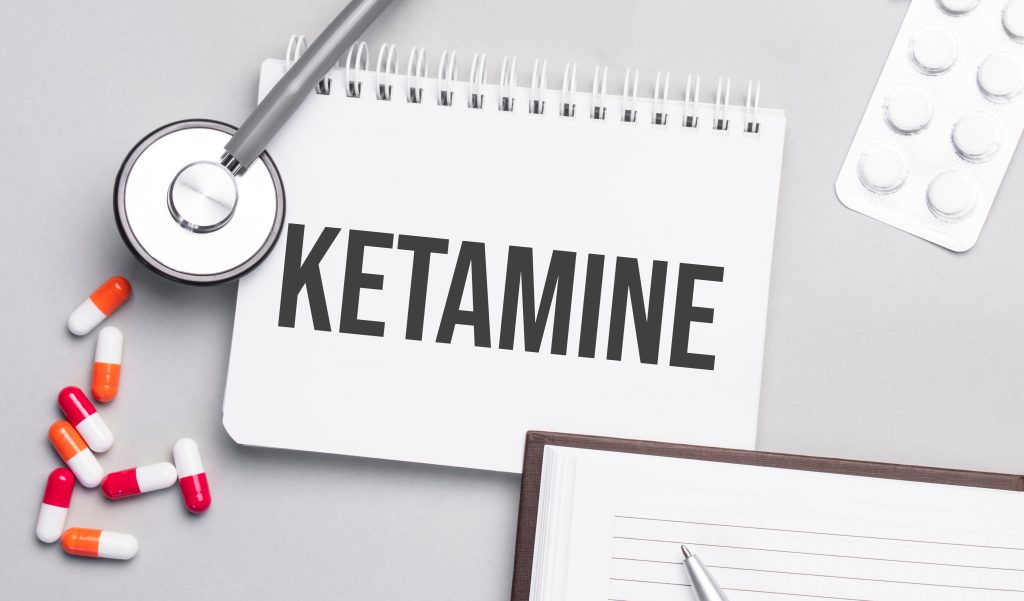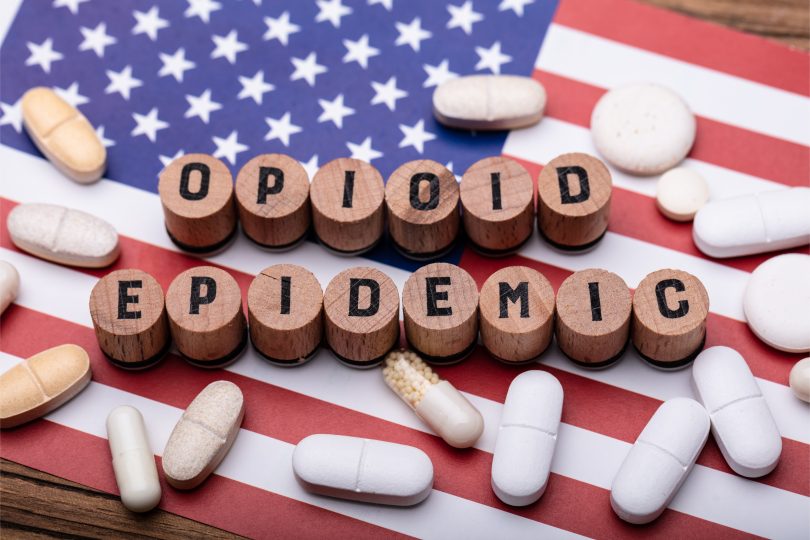When a title like this comes along, it’s enough to make your stomach drop. Amid constant talk of a growing opioid epidemic, which is now said to be responsible for the vast majority of 100,000 completely avoidable deaths a year, the CDC actually wants to make it even easier to get opioids by loosening prescription requirements. If you still have faith in your government to do what’s right by you, maybe now’s the time to take a harder look at that sentiment.
It is a mind-boggling level of insanity that the US government via the CDC wants to make it easier to get opioids amid the biggest drug crisis it’s ever dealt with. But that’s how much it cares about our collective health, as it does this in the face of better options like cannabis, ketamine, and the Zingiberaceae class of plants. We’re on top of this industry and everything that goes on it it. Sign up for THC Weekly Newsletter for more stories like this, as well as exclusive access to deals on flowers, vapes, edibles, and tons more products. Plus, we have excellent prices on cannabinoids, including HHC-O, Delta 8, Delta 9 THC, Delta-10 THC, THCO, THCV, THCP & HHC, which won’t break the bank. Check them out in our “Best-of” lists, and enjoy!
Opioids
It’s in every publication, it’s in tons of titles, and the result of it can really be felt. Opioids have become a horrifying (and embarrassing) mistake by the federal government, which has spiraled out to such degrees, that dozens of people are overdosing every day, making for incredibly high death totals. And this isn’t the coronavirus, which is expected to leave a death toll. These deaths, every single one of them, are completely avoidable.
Opioids are a class of drugs that come from, or are based on, compounds from opium, which can be found in poppy plants. They can appear naturally in nature, like morphine and codeine, which can be extracted from opium. Or synthetically, like hydrocodone and fentanyl. Even naturally occurring versions like codeine are still bought in synthetic form when purchasing opioids from a pharmacy. Opium is often turned into the street drug heroin through processing.
Opioids bind to opioid receptors in the central nervous system, the peripheral nervous system, and the gastrointestinal tract. Though they can bind to many receptors, the three main classes for this are μ, κ, and δ (mu, kappa, and delta) receptors. Opioids are best known, and most used, for controlling pain, but are also used medically for cough suppression and diarrhea. Users on opioids are prone to side effects like itchiness, sedation, nausea, constipation, respiratory depression, and euphoria – the main reason for their addictive quality.
These drugs produce a strong tolerance in users, meaning the dosage must increase to gain the same effects. Opioids are incredibly physically addictive, meaning a habitual user will likely go through a painful withdrawal when stopping. They are often used in conjunction with benzodiazepines to minimize feelings of sickness, and this can help lead to fatal overdoses.

Drugs like heroin are Schedule I in the DEA’s Controlled Substances list, but opioids are prescribed and sold medically under Schedules III, IV, and V. This makes them all more federally accessible than cannabis, which despite all the dangers of opioids and benefits of cannabis, remains in Schedule I.
News: The CDC wants to make it easier to get opioids
This opioid issue has been going on long enough that in 2016, the CDC instituted guidelines on prescribing for opioids. However, in what looks like a total turnaround, and rejection of any care about the current and growing problem, on Thursday, February 10th, 2022, the CDC actually proposed loosening guidelines for doctors prescribing opioids. And this even though the more strict 2016 guidelines obviously didn’t help make the problem any better. So why is the CDC doing this now in light of the current situation with opioids?
Because they’re saying that by doctors prescribing less (they didn’t), doctors have been cutting off patients who need opioids to deal with their pain, prematurely. Which is odd considering the CDC doesn’t regulate these things, and this news story, along with previous guidelines, are not about legal changes. They’re essentially no more than statements, but they’re statements that show a trajectory of thinking, and that’s why they’re dangerous.
These newer CDC guidelines repeat the 2016 guidelines in saying that “opioids should not be considered first-line or routine therapy for subacute or chronic pain”, as well as some acute pain. They also restate that doctors shouldn’t prioritize opioids over non-opioid treatments including things like exercise and physical therapy. This is great! But since it’s already the current situation, it’s also obviously not doing anything to have that in the guidelines.
What did change? The whole stipulation that doctors should avoid making increases to medication in the amount of 90 morphine milligram equivalents or more per day. The thing is, if you’ll notice the language, that was never a rule, just a recommendation (since the CDC is not the regulating body). And considering how little doctors have been paying attention to these guidelines anyway, it almost doesn’t matter beyond being a major slap in the face to show this kind of thinking, especially in light of what’s currently going on.
What was it changed to? The much broader statement of: “clinicians should prescribe the lowest dosage to achieve expected effects.” Gone also is the recommendation (still wasn’t a law) for timelines for these prescriptions. The prior guidelines stated that “three days or less will often be sufficient; more than seven days will rarely be needed.” This would not exist anymore, which could promote doctors putting patients on opioids endlessly.
Of course, whereas its often stated that “the guidelines were resulting in physicians unsafely tapering patients or cutting patients off entirely — in part because of the specific dosage benchmarks included in the guidelines”, the growing number of overdoses, the high number of prescriptions written, and the fact that they’re still being prescribed en masse by primary care physicians (who are not supposed to write such prescriptions), essentially points to this being nonsense.
This update would be one of many proposed changes that came out as a 229-page draft which was updated to the Federal Register. There will now be a 60-day public comment period. The CDC will consider all this before finalizing updates. As none of this is law, it doesn’t make a huge difference except to show a general intent of the governemtn. But if the government really wanted to help – if it really did – it would make it illegal for anyone but a specialist to write these prescriptions. Hey look, I’m just an ordinary citizen who came up with a more useful policy.

The opioid crises
While some publications like to tout a decrease in opioid prescriptions, with the AMA in 2021 claiming a 44.4% reduction in the past decade, this logically makes very little sense. And is completely derailed by general statistics. In 2020, NPR wrote how as of 2018 (when statistics were last made available.) that one in five Americans had an opioid prescription filled according to the CDC. In fact, enough prescriptions were being written for half of all Americans to have one. Kind of makes the AMA’s claim one year later sound like a baseless marketing ploy.
To take it a step further, any talk of a reduction in prescribing sounds silly at best. In 2017, over 191 million opioid prescriptions were written, which is actually equal to 58.7 prescriptions written for every 100 people. 45% of those came from primary care physicians who aren’t supposed to write such prescriptions (hence the fact that simply taking away their ability to do so could help hugely). Considering that doctors who aren’t supposed to be writing them were responsible for writing so many – even after the 2016 guidelines were put in place, ends the idea that those guidelines got in the way of anyone getting anything, or that prescription writing for opioids has gone down.
According to the NPR article, in 2018 (two years after the 2016 updates), approximately 40 people were dying of overdoses a day specifically from prescribed opioids. And that’s just deaths, it speaks nothing to the damage caused by those who live with these addictions. This problem is so intense that the CDC estimated the economic burden for all related health care, emergency care, addiction treatment, lost productivity, and criminal justice response to be about $78.5 billion per year. Who pays for that? The same people fed all these opioids – taxpayers.
In 2019, according to hhs.gov (US Health and Human Services) nearly 71,000 people died of overdoses that year. While approximately 14,480 were related to heroin, a massive 48,000 were from prescription opioids, meaning that 62,000 out of 71,000 overdoses were related to opioids. Whereas the agency’s stats put first time misusers at 1.6 million for that year, it listed 10.1 million who misused that year total.
In 2020, possibly due to corona, and possibly just showing a trajectory that had already started, the number of overdose deaths skyrocketed further to 93,331, a 30% increase, according to the CDC. And for 2021? While complete statistics have not been made available yet, some statistics have been released, namely in the way of statistics that point to the overdose number now capping 100,000 per year.
According to the final report of the Commission on Combating Synthetic Opioid Trafficking, put out in February 2022, for the year ending June 2021, there were over 100,000 total drug overdose deaths, with synthetic opioids claiming two out of three of those. So does it make sense that prescription writing has gone down? No, not even a little. And that makes what the CDC is proposing now, preposterous.
The situation is so bad (beyond the visible death statistics), that Big Pharma companies Johnson & Johnson, AmerisourceBergen, Cardinal Health, and McKesson just offered a settlement to Native American tribes of $590 million because of a case waged against them due to the damage opioids have caused that specific community. And this on top of a $26 billion global settlement that must be paid out by multiple Big Pharma companies including Johnson & Johnson, because of damage done.
What about ketamine?
The weirdest part to all this? Or maybe the part that shows the true corruption of the government? It’s already well understood – since back in 1964 – that ketamine works well for treating pain conditions. As ketamine is nonaddictive (its actually used to treat addiction), with a great safety profile including difficulty for causing overdose deaths, it should be the obvious answer. In fact, not only is it great for pain, but because it’s also been shown to be great for addictions, it creates the one-two punch that’s so badly needed right now.

How does the government so specifically know this? Because the first ketamine study done back in 1964 was done with prisoners. As in, members of a government prison were used in the study. The investigation was done via the Parke Davis Clinical Research Unit at the Jackson Prison in the state of Michigan, but assuming the government wouldn’t get an automatic peek at research being done on government sanctioned prisoners, is preposterous at best. Plus, even if results weren’t shared privately with the government, they were published in 1965. The government has most certainly known since then, backed up by tons of follow-up studies that have been released in the years since.
In fact, ketamine works so well, that a huge gray market has sprouted up with medical clinics offering off-label use of ketamine for pain. So this drug with a much safer safety profile, which isn’t addictive, and which can offer relief for all kinds of pain without the threat of death, isn’t even being mentioned, while the CDC plans to backhandedly make opioids even more accessible.
Craziest part of all this? Johnson & Johnson is the only pharma company to have an approved version of ketamine out (likely approved with the hope of diverting from the ketamine gray market) in the form of esketamine. It’s also paying out billions for damages from opioids. Yet when Johnson & Johnson filed for its new drug application for esketamine, pain was never mentioned. It seems the desire is not to fix the problem, but to keep it going, as better methods are continuously being suppressed.
Take cannabis, for example. Which has also shown the ability to deal with pain, or kratom. Or plants like ginger and turmeric from the Zingiberaceae plant family which are consistently written about for their pain benefits. Personally, I drink ginger tea nearly every day to help with the accumulated pain and injuries of ballet, and its often the difference between being able to stand up straight, or not. I cannot express better than this what a massive difference that plant makes.
Conclusion
So thanks to the apathy of the US government, and the pushing of Big Pharma, it looks like the CDC has us all set for bigger increases in deaths with even less guidelines for opioids. I guess this is the best that they could come up with to fight the much better working ketamine system, which stands to help the problem for those who suffer from either pain or addictions to opioids. Which is probably because in the end, even as a pharma product, ketamine is easily made on the black market as well as being offered as a generic, indicating that as it gets more popular, this will not necessarily help Big Pharma, making it undesirable.
And considering that Big Pharma literally started this epidemic, along with the US government which allows it through regulation, it makes sense that the two entities would do everything possible to protect the industry. Even at the cost of your life.
Welcome readers! Thanks for making it to CBDtesters.co, the internet’s one-stop shop for the most important and relevant independent news coverage of the cannabis and psychedelics-related industry. Stop by regularly to stay informed on the ever-morphing landscape of legal drugs and industrial hemp, and subscribe to The THC Weekly Newsletter, so you’re never late on getting the news.
Disclaimer: Hi, I’m a researcher and writer. I’m not a doctor, lawyer, or businessperson. All information in my articles is sourced and referenced, and all opinions stated are mine. I am not giving anyone advice, and though I am more than happy to discuss topics, should someone have a further question or concern, they should seek guidance from a relevant professional.









